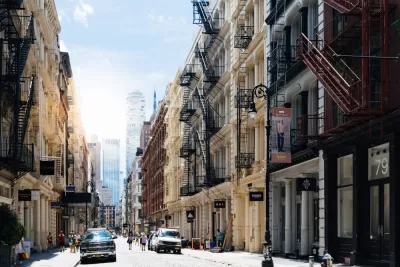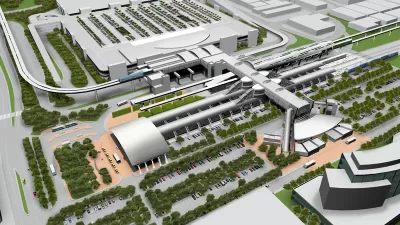Inequality is growing faster in large metropolitan areas, according to a New York Times data visualization.

Emily Badger and Kevin Quealy report on how inequality is changing in the urban areas of the United States.
Economic inequality has been rising everywhere in the United States. But it has been rising much more in the booming places that promise hefty incomes to engineers, lawyers and innovators. And those places today are also the largest metros in the country: New York, Los Angeles, San Francisco, San Jose, Houston, Washington.
The news about growing inequality in the nation's largest metros is supplemented with a graphic populated with uses data from a recent analysis by Jaison Abel and Richard Deitz [pdf] of the New York Fed. The examples of New York City and Binghamton, New York, provide illustration of the larger narrative about worsening inequality in large metros.
FULL STORY: Watch 4 Decades of Inequality Drive American Cities Apart

Alabama: Trump Terminates Settlements for Black Communities Harmed By Raw Sewage
Trump deemed the landmark civil rights agreement “illegal DEI and environmental justice policy.”

Study: Maui’s Plan to Convert Vacation Rentals to Long-Term Housing Could Cause Nearly $1 Billion Economic Loss
The plan would reduce visitor accommodation by 25% resulting in 1,900 jobs lost.

Why Should We Subsidize Public Transportation?
Many public transit agencies face financial stress due to rising costs, declining fare revenue, and declining subsidies. Transit advocates must provide a strong business case for increasing public transit funding.

Wind Energy on the Rise Despite Federal Policy Reversal
The Trump administration is revoking federal support for renewable energy, but demand for new projects continues unabated.

Passengers Flock to Caltrain After Electrification
The new electric trains are running faster and more reliably, leading to strong ridership growth on the Bay Area rail system.

Texas Churches Rally Behind ‘Yes in God’s Back Yard’ Legislation
Religious leaders want the state to reduce zoning regulations to streamline leasing church-owned land to housing developers.
Urban Design for Planners 1: Software Tools
This six-course series explores essential urban design concepts using open source software and equips planners with the tools they need to participate fully in the urban design process.
Planning for Universal Design
Learn the tools for implementing Universal Design in planning regulations.
Caltrans
Smith Gee Studio
Institute for Housing and Urban Development Studies (IHS)
City of Grandview
Harvard GSD Executive Education
Toledo-Lucas County Plan Commissions
Salt Lake City
NYU Wagner Graduate School of Public Service




























